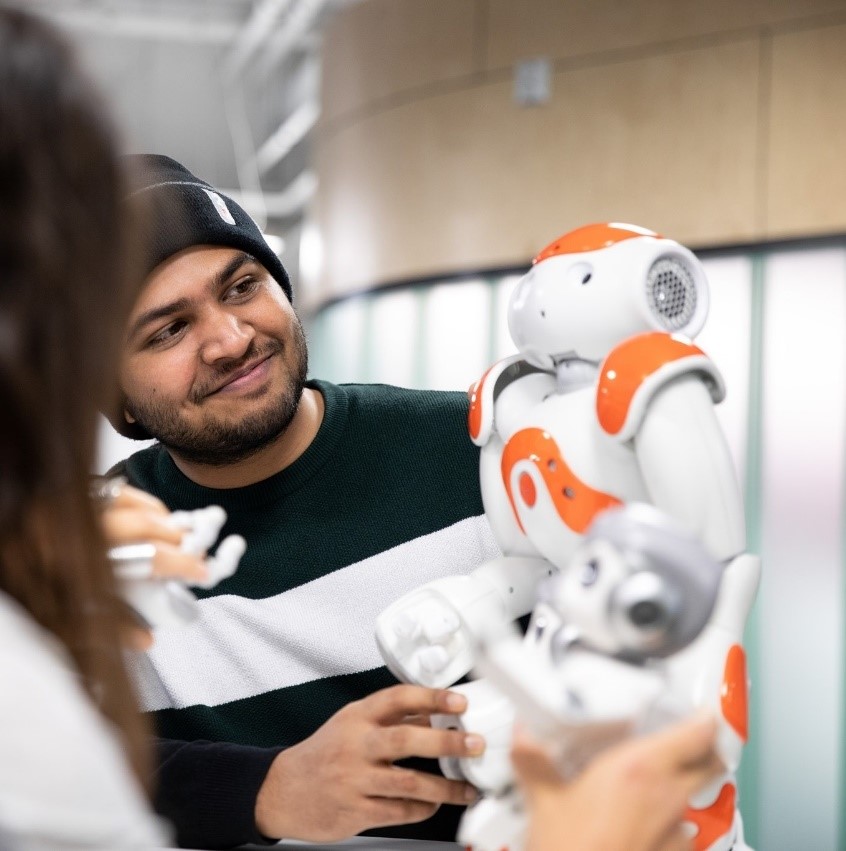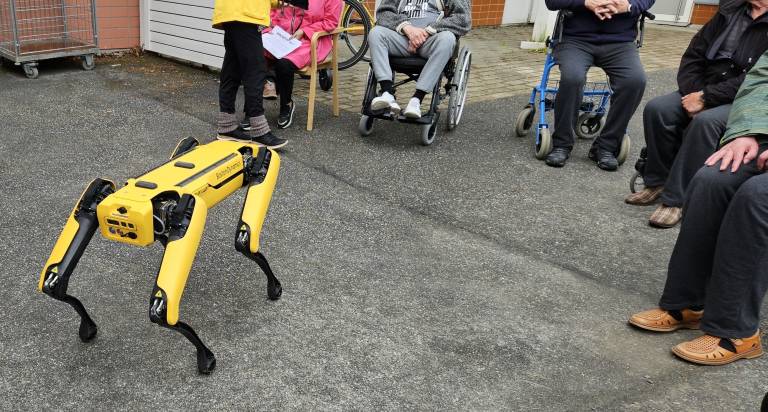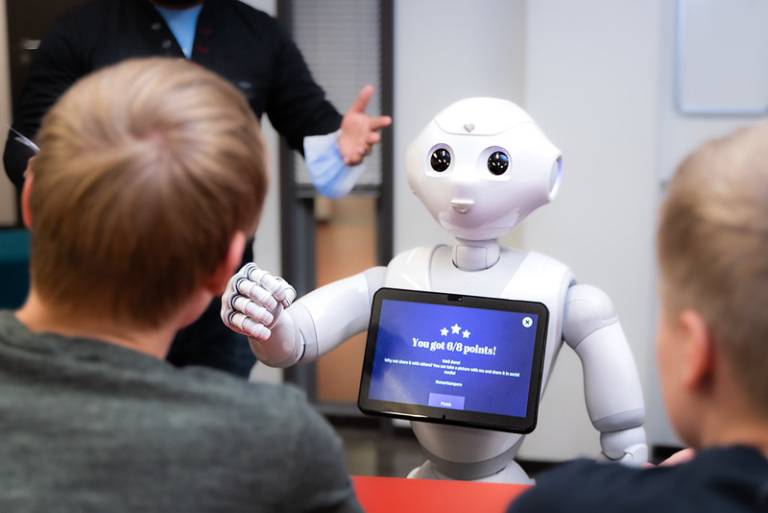Courses like Psychology in Human-Technology Interaction, Multimodal Interactions, Interaction Techniques and User Experience Design were introducing me to a whole new paradigm of knowledge. I learnt a lot of new things and they fascinated me! Studying here seems like a fun activity that might earn me a degree! Anyways, the course that had the biggest impact on me and possibly my future was User Experience in Robotics. I had never interacted with robots before and I fell in love immediately with them! And by the time I was finished with the course, I had already decided to do my thesis on robots.
For my thesis, I got a rare chance to work with a company, Utelias Technologies. They have developed an AI based platform, Elias, which aids language learners by assisting learning in a fun and engaging way. The Elias application is compatible with social robots and can be used through them for creating a more interactive learning environment. The platform itself as of now is just like a web application with voice and visual effects. Utelias wanted to explore if it’s possible to integrate a virtual robot to the platform which will actively interact and work as the point of interaction between the platform and the user. After several meetings with them, we decided to investigate 3 major parts of the virtual robot: 1) appearance, 2) interactional behavior and 3) rewarding schemes.
We conducted a co-design workshop to understand potential users’ expectations for a language learning companion virtual robot. Utelias had provided us with guidance as well as necessary materials (access to the paid platform) to make our job as smooth as possible. In later phases, they also provided their opinion and necessary feedback to direct us into the right track. In parallel to our user research, Utelias started designing the virtual robot avatar. After we had analyzed our co-design workshop data, a meeting was arranged to demonstrate our preliminary findings. Our findings were very well appreciated and significant changes were made to the avatar design based on them.
Currently, we are planning on evaluating our findings and hopefully it results in significant knowledge being added to this very interesting field!
Written by Eshtiak Ahmed, Master’s thesis worker





